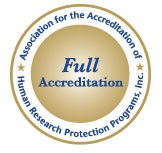Protocol Development
Developing a Protocol
 The quality of science is often improved when study objectives and methods are clearly thought through and described. A written protocol facilitates high quality science and is an invaluable tool to investigators as they develop and conduct studies.
The quality of science is often improved when study objectives and methods are clearly thought through and described. A written protocol facilitates high quality science and is an invaluable tool to investigators as they develop and conduct studies.
Regardless of the scientific discipline in which the study is undertaken, the same scientific method is used. Further, while the scientific content will differ across studies, the general elements of the study protocol will be similar.
The Excellence in Science committee at the Centers for Disease Control and Prevention (CDC) has developed a general protocol checklist and companion guide to assist scientists in preparing protocols. The checklist is intended as an aid in suggesting a format for writing protocols and in identifying issues that scientists should consider as they design the study. The checklist was developed to have utility in conducting laboratory and basic science studies, epidemiologic studies, and behavioral and social science studies employing a variety of study designs.
In using the checklist, investigators should select the items that apply to their types of studies. It is unlikely that any protocol would include every item on the checklist.
General protocol checklist
This checklist is intended as an aid in suggesting a format for writing protocols and in identifying issues that scientists should consider as they design a study or surveillance system. When using the checklist, investigators should select the items that apply to their specific project. It is not expected that every item on the checklist is applicable to each protocol for a study or surveillance system.
| Section | Item |
| Project overview | Title |
| Protocol summary | |
| Investigators & roles/collaborators & roles/funding sources | |
| Introduction | Literature review/current state of knowledge about project topics |
| Justification for study | |
| Intended/potential use of study findings | |
| Study design/locations | |
| Objectives | |
| Hypotheses or questions | |
| Procedure/methods design | How study design or surveillance system address hypothese and meets objectives |
| Audience and stakeholder participation | |
| Study timeline | |
| Procedures/methods study population | Description and source of study population |
| Case definitions | |
| Participant inclusion criteria | |
| Participant exclusion criteria | |
| Justification of exclusion of any sub-segment of the population | |
| Estimated number of participants | |
| Enrollment | |
| Consent Process - WILL SEEK WAIVER | |
| Procedures/methods Variables/interventions | Variables |
| Study instruments, including questionnaires, laboratory instruments and analytic tests (including abstract form, paper and electronic) | |
| Training for all study personnel | |
| Data collection | Information management and analysis software (abstracting software) |
| Data entry, editing and management, including handling data collection forms, different versions of data and data storage and disposition (including treatment data consolidation) | |
| Quality control/assurance | |
| Bias in data collection, measurement and analysis | |
| Intermediate reviews and analyses (pilot test) | |
| Limitations of study | |
Procedure/methods | Notifying participants of study findings |
| Anticipated products or inventions resulting from the study and their uses | |
| Disseminating results to public (including data publication guidelines and manuscript writing roles | |
References | Literature searches |
| Appendix materials | Data collection forms |
| Proposed tables and figures | |
| Other relevant documents |


